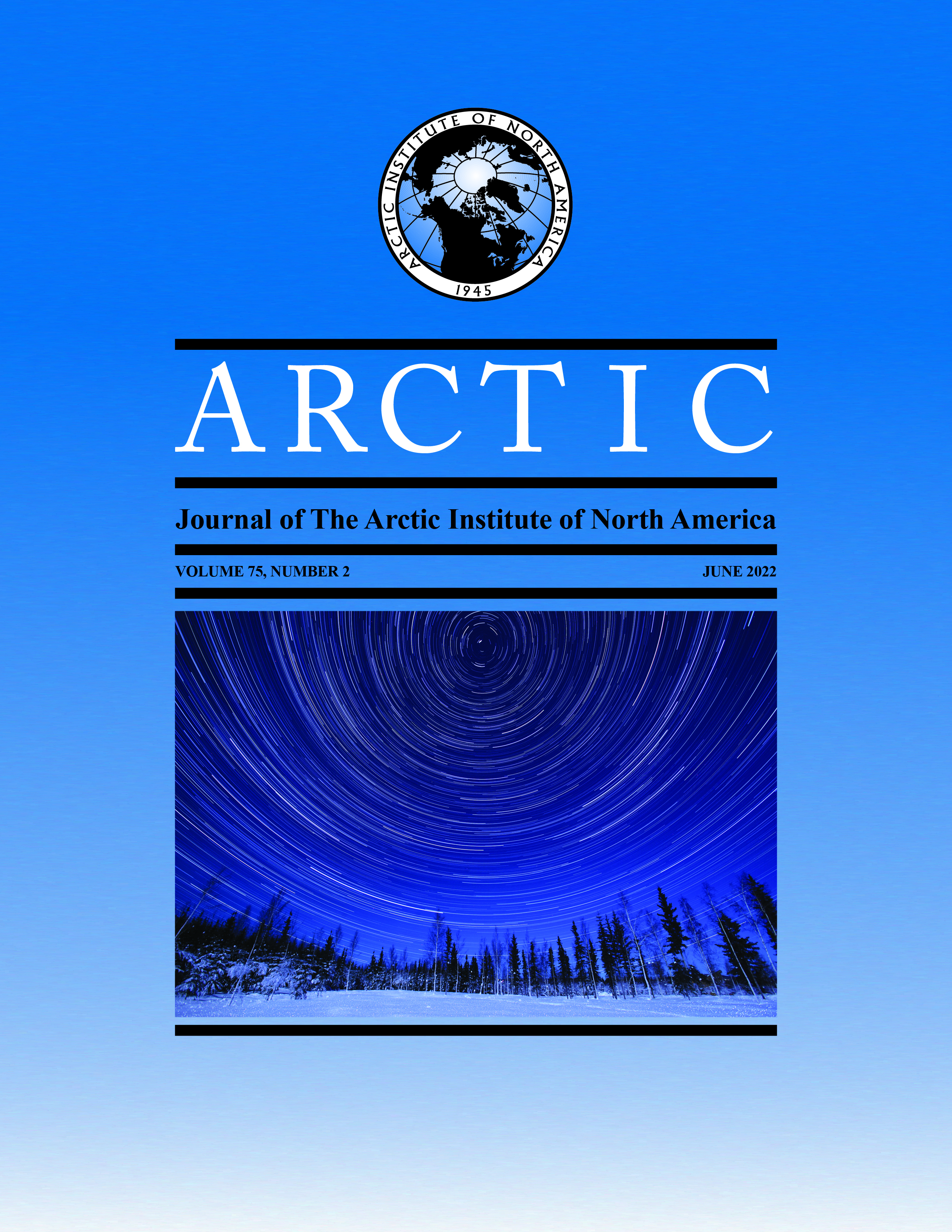Yellowknives Dene and Gwich’in Stellar Wayfinding in Large-Scale Subarctic Landscapes
DOI:
https://doi.org/10.14430/arctic75292Ключевые слова:
stellar wayfinding; Indigenous navigation; Yellowknives Dene; Gwich’in; landscape legibility; Northern Dene astronomy; Yukon Flats; barrenlands; dead reckoning; Big DipperАннотация
Indigenous systems of stellar wayfinding are rarely described or robustly attested outside of maritime contexts, with few examples reported among peoples of the high Arctic and some desert regions. However, like other large-scale environments that exhibit a low legibility of landmarks, the barrenlands of the Northwest Territories and the Yukon Flats of Alaska generally lack views of prominent or distinguishing topography for using classic route-based navigation. When travelling off trails and waterways in these respective inland subarctic environments, the Yellowknives Dene and the Alaskan Gwich’in utilize drastically different stellar wayfinding approaches from one another while essentially sharing the same view of the sky. However, in both systems the use of celestial schemata is suspended in favor of route-based navigation when the traveller intersects a familiar geographical feature or trail near their target destination, suggesting strong preference for orienting by landmarks when available. A comparison of both wayfinding systems suggests that large-scale environments that lack a readily discernible ground pattern may be more conducive to the development and implementation of a celestial wayfinding schema when combined with other influential factors such as culture, individual experience, and travel behavior. These are likely the first stellar wayfinding systems described in detail for any inland subarctic culture.
Загрузки
Опубликован
Выпуск
Раздел
Лицензия
Copyright (c) 2022 ARCTIC

Это произведение доступно по лицензии Creative Commons «Attribution» («Атрибуция») 4.0 Всемирная.


